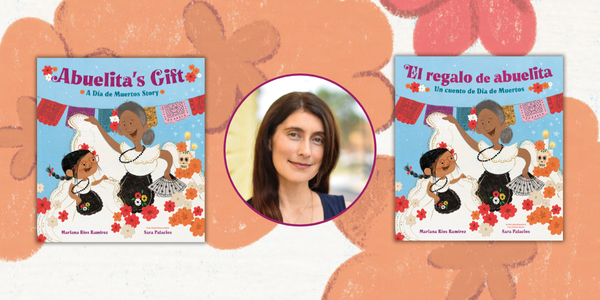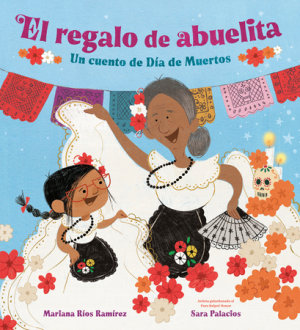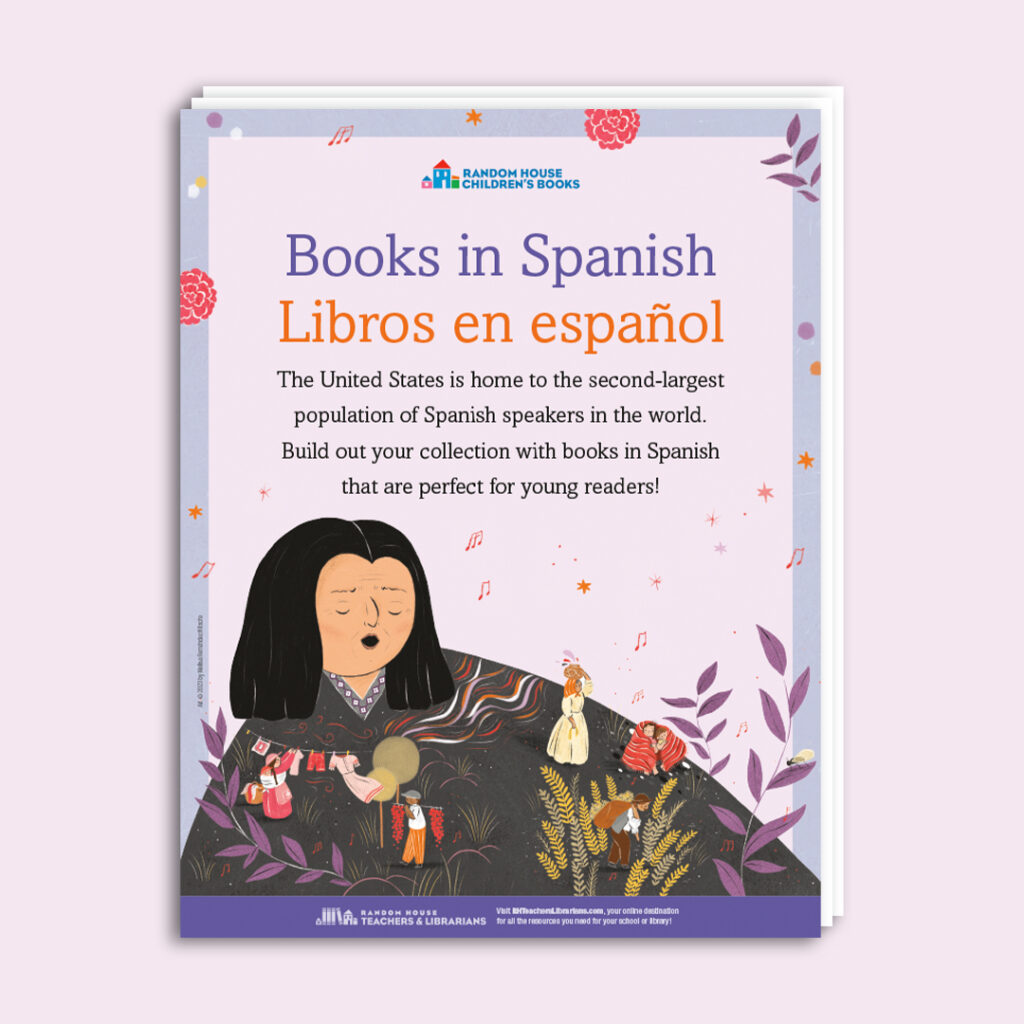What inspired you to write Abuelita’s Gift: A Día de Muertos Story?
I wrote Abuelita’s Gift: A Día de Muertos Story because I wanted to share a piece of México with my kids. When my family moved to the USA in 2016, my children were faced with several new traditions that we were not used to before. Since then, we have embraced them. However, for my husband and I, it was also important that my kids had their own Mexican traditions. In this particular case, Día de Muertos allows us to feel connected to México, but also to our family and ancestors. It’s the perfect opportunity to share with our children the memories we have of our grandparents, great grandparents, and other dear relatives. This is a tradition I hope my kids will continue to celebrate as they grow up.
What was the most difficult part about writing the book? What part was the easiest?
The most difficult part was making sure that the theme of death was not the center of the story. I wanted the focus to be on the close and loving relationship between Julieta and Abuelita, and how Julieta was able to find a way to stay connected to her, even when Abuelita was no longer around. Highlighting the sweet moments the characters shared was key to building their relationship and add more heart to the pages. However, it was also necessary to show Abuelita had passed away and how Julieta was impacted by that event. Sara Palacios’ illustrations captured the emotion of that moment so perfectly, that not much text was needed to convey those feelings of life changing grief.
As for the easiest part for me to write, it was the ending. From the very beginning I knew how I wanted the story to end. With Julieta finding the right gift within herself and being able to feel the connection with Abuelita restored. However, I also wanted her to realize that she loved dancing and that she could find joy in it again, even without Abuelita. For this reason, the last two spreads of the book are my favorite.
“Dancing was Abuelita’s Gift to me,” Julieta said. “Now, it’s mine for us both.”
What element of the story do you identify with the most and why?
I would say the love of family is the element of the story that I identify with the most. I’ve always been a person who’s been close to my family (nuclear and extended). I cherish spending time together, making memories, taking photos of our special moments, and I enjoy keeping mementos in memory boxes just like Julieta.
Now that I’m living far away from México, it’s my family that I miss most. For this reason, this book about endless love and connection with loved ones resonates with me so much.
What do you want kids today to take away from this story?
First of all, I want readers to get a glimpse of what Día de Muertos is about, so they can have a better understanding of this beautiful Mexican tradition. For this reason, it was important for me to include detailed back matter in the book. However, I also want children to wonder about their own family and ancestors, to ask questions so they can get to know more about their past and about themselves. I hope they will remember Día de Muertos as a celebration of love and family, and that our loved ones never really leave us as long as we remember them and keep them alive in our hearts.
Another important take away to keep in mind is that the best gifts always come from the heart, and in that way the gift is not only for the person who receives it, but for the giver as well.
What are you currently reading?
I just checked out A Flicker of Hope from my local library. It’s written by Cynthia Harmony and illustrated by Devon Holzwarth. The text is heartwarming, sweet, and powerful while the illustrations are beautiful and go perfectly well with the lyrical words on the pages.
What was the process like translating Abuelita’s Gift into El regalo de abuelita, which was published simultaneously in Spanish?
The decision to have a Spanish edition of Abuelita’s Gift wasn’t considered from the beginning, so it was a pleasant surprise. Gianna Lakenauth, my editor, shared the news about the translation and asked if I would like to do it, since my first language is Spanish. I felt very honored and thankful for the opportunity and also really happy that our book about a beloved Mexican tradition would also be released in my own language.
Translating to Spanish didn’t take a long time, but it was a bit more complicated than I had anticipated. I realized it was not just a matter of finding the right words in Spanish, but I also had to make sure that children could understand them and that they had a nice sound and flow. I had spent a long time trying to find the perfect words in English while editing, and sometimes there are words or phrases that are just not translated to Spanish exactly the same. Through the process I learned it was a matter of keeping the essence of the meaning and feeling in the sentences of the English edition, and not just worrying about translating exactly word by word.






